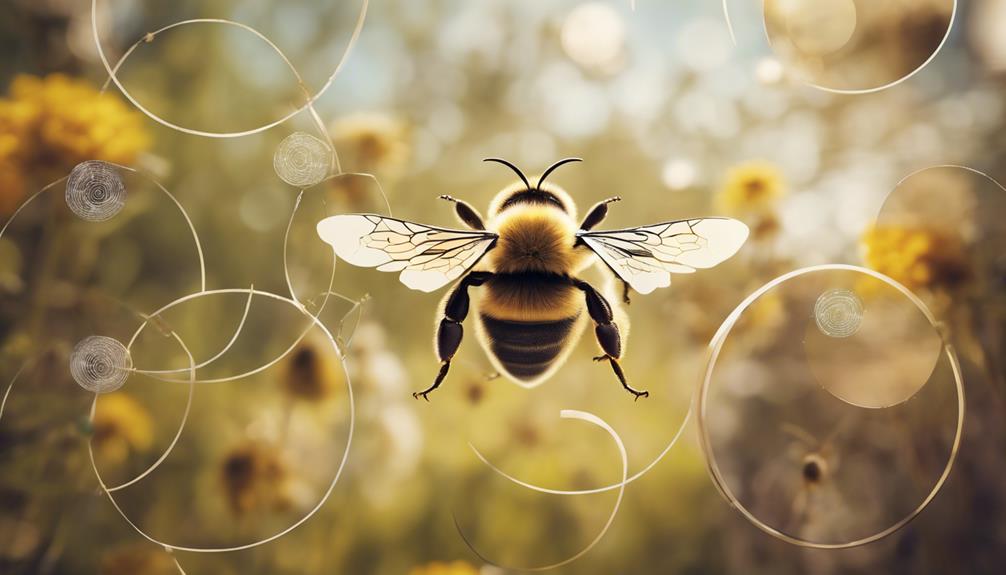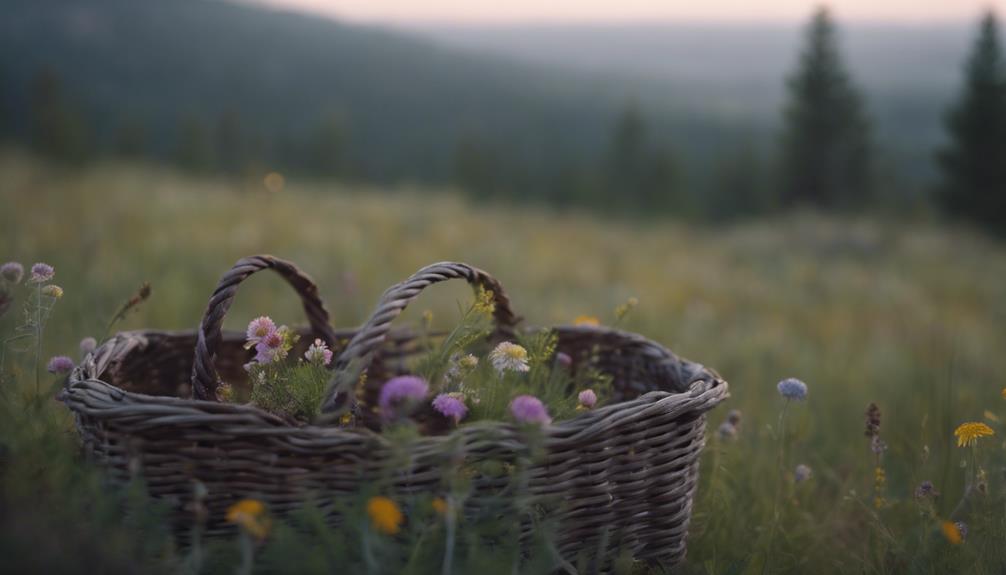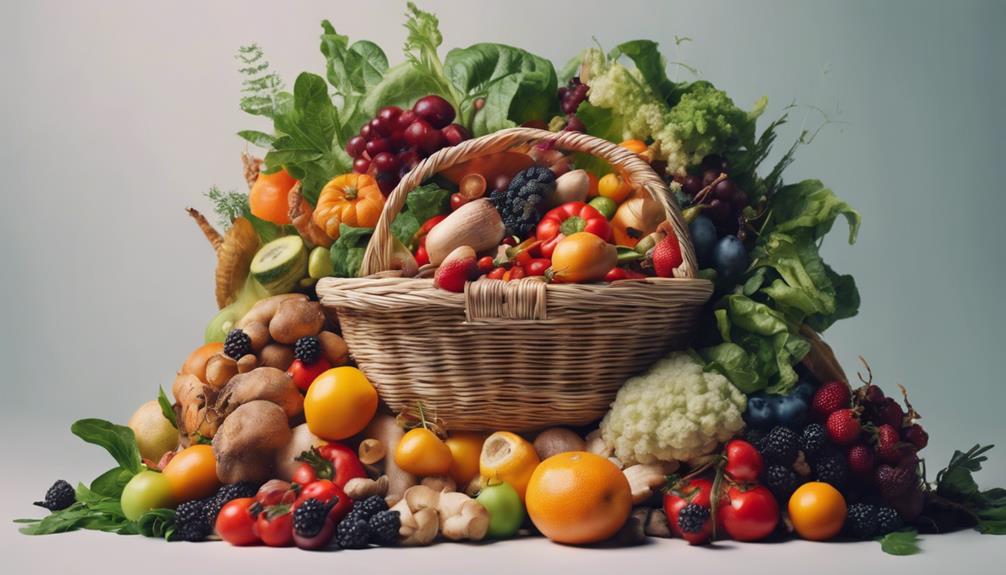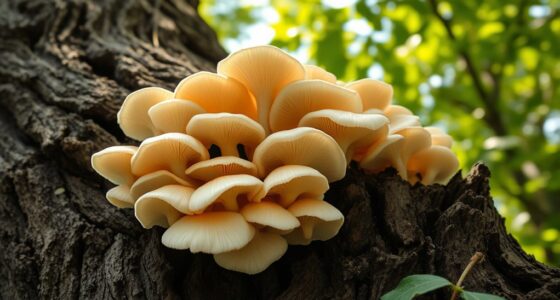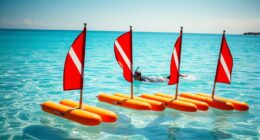As you start foraging, you'll need to identify edible plants and mushrooms, learn their seasonal availability, and develop a connection with nature. Properly identify plants using field guides or reputable resources, and be cautious of poisonous lookalikes. Start with easy-to-spot plants like stinging nettles and wild garlic. Forage in forests, fields, and urban areas, but check local rules first. Wash and handle your finds gently to preserve quality, and learn to store and preserve your wild edibles. With practice and patience, you'll reveal the secrets of foraging and enjoy the rewards of wild food hunting – and there's still more to discover.
Key Takeaways
- Learn to identify edible plants and mushrooms in your region, understanding their seasonal availability and characteristics.
- Develop a keen eye for detail to differentiate between edible plants and their toxic lookalikes, using field guides or reputable resources.
- Start with hard-to-mistake plants like stinging nettles and wild garlic, and practice identifying these relatively easy plants for confidence in foraging.
- Explore various environments like forests, fields, urban areas, and backyard gardens to find wild foods, checking local rules and regulations beforehand.
- Properly handle and store foraged foods by washing, drying, freezing, pickling, or cooking to preserve them, maintaining flavor, texture, and nutritional value.
Understanding Wild Food Hunting
As you start your wild food hunting journey, it's vital to grasp the fundamentals of foraging, starting with the understanding that it's not just about finding free food in the woods, but about developing a deep connection with nature and its rhythms.
Foraging involves identifying, collecting, and consuming wild herbs, plants, and mushrooms from natural environments. As a beginner, it's important to learn to properly identify edible plants and mushrooms in your region. This knowledge will help you understand the seasonal availability of wild foods, ensuring you're prepared for successful foraging expeditions.
Identifying Edible Plants Safely

You'll need to develop a keen eye for detail to accurately identify edible plants, as a single misstep can have serious consequences.
When foraging, it's vital to differentiate between edible plants and their toxic lookalikes. To guarantee safe foraging, utilize field guides or reputable resources to accurately identify edible plants.
Never consume a plant if you're unsure of its identity, as this can lead to poisoning. It's imperative to understand plant safety and characteristics to have successful foraging trips.
Remember, proper identification is key to safe foraging. Don't rely on assumptions or guesswork, as this can be dangerous. Instead, take the time to learn about the plants you're interested in foraging, and always err on the side of caution.
Top Plants for Beginners

Getting started with foraging can be intimidating, but focusing on a few easy-to-identify plants can help build confidence and set you up for success. As a beginner, you'll want to start with plants that are hard to mistake for anything else.
Stinging nettles are a great place to start, and they're best picked in early spring. Wild garlic is another ideal choice, thriving in wet ground and ready to pick from late March onwards.
In late May to early July, keep an eye out for elderflowers, which are commonly used in cordials. When autumn rolls around, blackberries are abundant and freeze well, making them a great option for beginners.
If you're looking for a tasty treat, try foraging for sweet chestnuts, perfect for pestos and roasting. These plants are all relatively easy to identify, and with a little practice, you'll be foraging like a pro in no time.
Remember to always follow safe foraging practices, and happy hunting!
Common Plants to Avoid

When foraging for wild foods, it's important that you learn to recognize and steer clear of plants that can cause harm, even death. You're not just looking for edible goodies, but also avoiding poisonous plants that can ruin your day – or worse.
Take the Death Cap mushroom, for instance, which is responsible for many mushroom poisoning cases. Monkshood is another one to watch out for, as it contains poisonous alkaloids that can cause severe symptoms if ingested. Hemlock, a deadly plant, resembles wild chervil and should be avoided at all costs.
And let's not forget Poison ivy, which can cause skin irritation and rashes upon contact. You don't want to accidentally grab a handful of that while foraging!
Where to Find Wild Foods

Wild foods can be found in a variety of environments, from forests and fields to urban areas and even your own backyard garden.
When foraging for food, you'll often find edible plants like ferns, mushrooms, and berries in forested areas. But don't overlook your local park or community garden, as they can also provide opportunities for wild food hunting.
If you live near the coast, you can forage for seaweeds and bivalves like mussels and oysters. Even your own backyard garden might've plants that grow wild, like dandelion greens or wild garlic.
When local foraging, it's essential to check local rules and regulations, as national parks may prohibit foraging activities. Always research the specific laws and guidelines in your area before heading out to search for wild food.
Essential Foraging Safety Tips

As you venture into the world of foraging, it's vital to prioritize safety above all else. You're about to learn the essential tips to guarantee a safe and enjoyable foraging experience.
Starting with knowing your plants, being aware of your surroundings, and avoiding deadly lookalikes. By following these guidelines, you'll be well-equipped to harvest wild foods with confidence and minimize the risk of accidents.
Know Your Plants
One essential step in guaranteeing your foraging adventure doesn't turn into a recipe for disaster is to positively identify the plants you plan to eat, because mistaking a toxic lookalike for a tasty treat can have serious consequences. As a beginner, it's vital to know your plants to avoid consuming something harmful.
| Safe Foraging Tips | What to Avoid |
|---|---|
| Carry a field guide with clear pictures of edible plants | Relying on the Universal Edibility Test for mushrooms |
| Supervise children while foraging to make sure they don't consume harmful plants | Consuming a plant that you're unsure about |
| Be cautious when trying new wild foods, especially if you have allergies | Eating a plant that's past its prime or rotten |
Be Aware Surroundings
You need to stay alert and attuned to your surroundings while foraging, constantly scanning for potential hazards like wildlife, uneven terrain, and shifting weather conditions.
As you venture out to forage for wild greens, it's important to keep your wits about you. Essential foraging safety tips include staying alert for potential hazards that could ruin your foraging adventure.
Be mindful of your surroundings to avoid accidents and guarantee a successful foraging experience. Keep an eye out for poisonous plants, insects, or wildlife that could pose a threat while you're out searching for food.
Practicing mindfulness in your surroundings is vital for a safe and enjoyable foraging adventure. Remember, foraging for food in the wild requires attention to detail and a clear head.
Stay focused, and you'll be able to identify those delicious wild greens and enjoy a bountiful harvest. By being aware of your surroundings, you'll be better equipped to handle any challenges that come your way, and you'll return home with a basket full of fresh, wild goodies.
Avoid Deadly Lookalikes
It's important to develop a keen eye for distinguishing between toxic twins and their tasty counterparts, as deadly doppelgangers lurk in the wild, and mistaking them for edible plants can be catastrophic.
As a beginner in foraging, it's vital to prioritize safety and avoid deadly lookalikes. Identifying deadly plant lookalikes is necessary for safe foraging, and it's not just about recognizing the edible ones.
Here are some vital tips to keep in mind:
- Always cross-reference plant characteristics before consuming any wild food to make sure it's safe to eat.
- Don't rely on a single field guide or expert; consult multiple sources to confirm a plant's identity.
- Prioritize safety by being 100% certain of the plant you're foraging; if in doubt, avoid it altogether.
Processing Your Wild Harvest

Now that you've successfully foraged for wild foods, it's essential to process them promptly to maintain their freshness and nutritional value.
You'll need to clean and prepare your harvest, handling each item with care to prevent spoilage and contamination.
Clean and Prepare
With your freshly gathered wild harvest in hand, the next essential step is to clean and prepare it to guarantee excellent flavor, texture, and food safety. This important process involves removing any dirt, bugs, or contaminants from your foraged food.
You'll want to wash your wild harvest thoroughly, making sure to remove any tough stems, wilted leaves, or spoiled parts.
Here are some essential steps to keep in mind:
- Wash your foraged food gently but thoroughly to remove dirt and debris
- Remove any tough or spoiled parts to preserve flavor and texture
- Dry, freeze, pickle, or cook your foraged items to preserve them
Handle With Care
Process your wild harvest with care, as improper handling can spoil the entire batch, rendering it inedible or even toxic. When it comes to processing your wild edibles, proper handling techniques are vital to guarantee the safety and quality of the food you gather.
Cleaning is an essential step in preparing your wild harvest, as it helps remove dirt, insects, or other contaminants they may have picked up in the wild. Washing your wild foods with clean water is necessary to eliminate any residue or impurities before cooking or eating them.
Store With Ease
You've gathered a bounty of wild edibles, and now it's crucial to store them properly to maintain their flavor, texture, and nutritional value. Processing your wild harvest involves cleaning, sorting, and storing foraged items properly to preserve their goodness.
Here are some methods to store your wild edibles with ease:
- Drying: Dry herbs and flowers to preserve them for later use in teas, soups, or as seasonings.
- Freezing: Freeze berries and fruits to maintain their freshness and flavor for longer periods.
- Preserving: Make jams, jellies, or syrups from foraged fruits, or can vegetables or pickle wild edibles to extend their shelf life.
Frequently Asked Questions
How Do Beginners Do Forage?
You start foraging by identifying easy-to-spot plants like nettles, wild garlic, and blackberries, learning when to pick them, and being cautious to avoid misidentification, trying small amounts before consuming.
How Do You Start Food Foraging?
You're not a botanist, but you can still start foraging! Begin by researching edible plants in your area, then join local foraging groups or take classes to learn from experts, and finally, invest in a reliable field guide or app.
How Does Foraging Work?
You start by learning about edible plants, their habitats, and growth cycles, then head outdoors to identify and harvest them, using caution to avoid toxic lookalikes and pollution, and respecting the environment.
What Is the Rule of Foraging?
You're wondering what the Rule of Foraging is. It's a set of principles guiding sustainable wild food gathering, emphasizing taking only what you need, respecting nature, and leaving no trace to preserve ecosystems. By adhering to these guidelines, foragers help maintain a balance between human activity and the natural environment, ensuring that wild food sources remain abundant for future generations. Foraging decline measurement techniques can be employed to track the health of ecosystems, assessing whether certain species are overharvested or at risk of depletion. Utilizing these methods enables communities to make informed decisions on sustainable practices and adjust their foraging habits accordingly. Additionally, understanding **how to measure foraging decline** allows both foragers and conservationists to identify early warning signals and implement corrective measures before irreversible damage occurs. This proactive approach not only protects biodiversity but also supports the long-term health of ecosystems. By fostering a symbiotic relationship with nature, we can ensure that wild food sources thrive for generations to come.
Conclusion
You've now ventured into the world of foraging, equipped with the knowledge to start your wild food hunting journey.
Remember, foraging is like deciphering a treasure map, requiring attention to detail and a willingness to learn.
As you explore the wild, your senses will come alive, and your connection with nature will flourish.
Happy foraging!


